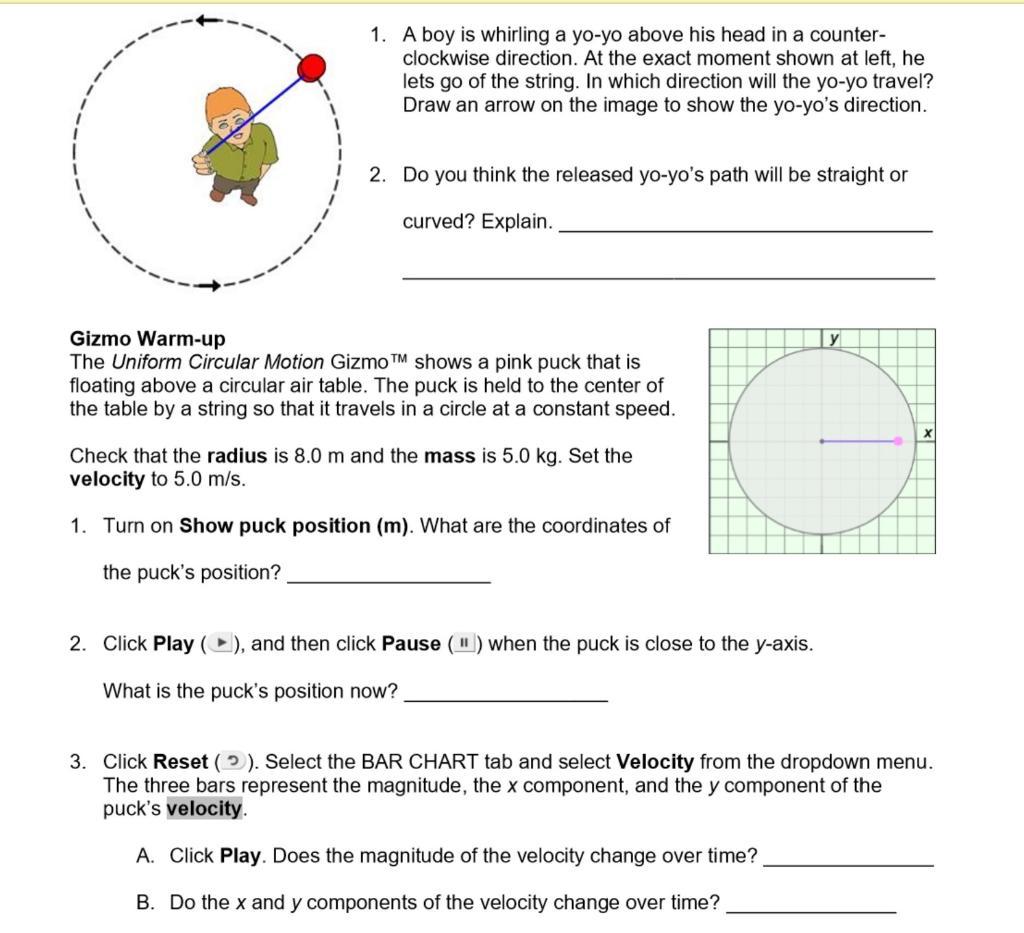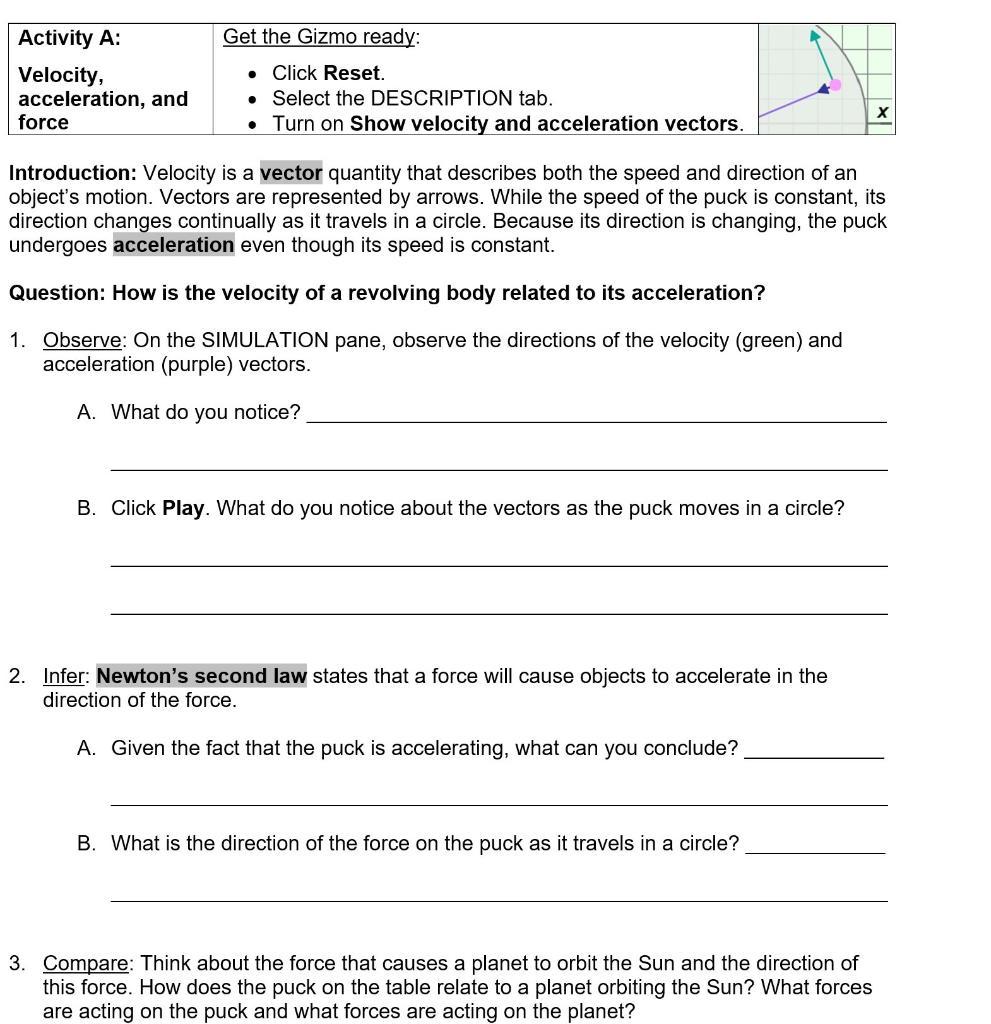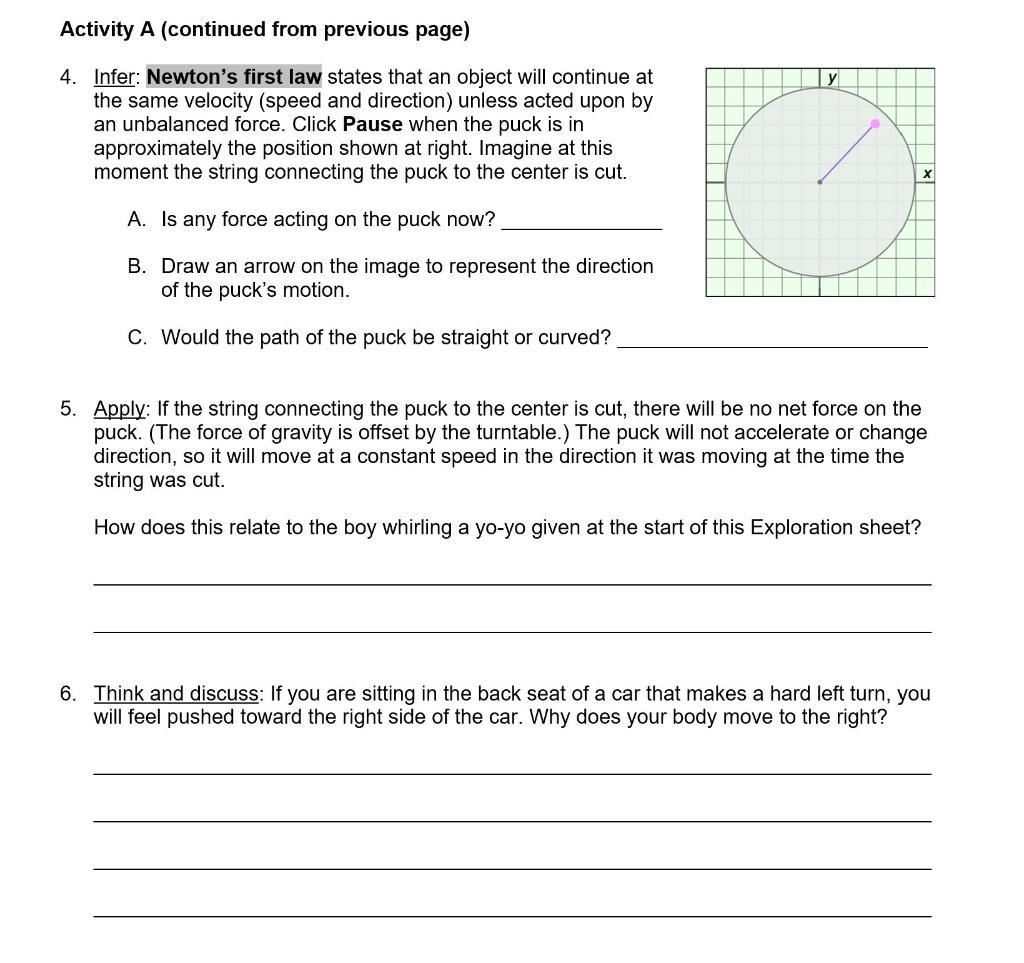Answered step by step
Verified Expert Solution
Question
1 Approved Answer
1. A boy is whirling a yo-yo above his head in a counter- clockwise direction. At the exact moment shown at left, he lets
1. A boy is whirling a yo-yo above his head in a counter- clockwise direction. At the exact moment shown at left, he lets go of the string. In which direction will the yo-yo travel? Draw an arrow on the image to show the yo-yo's direction. 2. Do you think the released yo-yo's path will be straight or curved? Explain. Gizmo Warm-up The Uniform Circular Motion Gizmo TM shows a pink puck that is floating above a circular air table. The puck is held to the center of the table by a string so that it travels in a circle at a constant speed. y Check that the radius is 8.0 m and the mass is 5.0 kg. Set the velocity to 5.0 m/s. 1. Turn on Show puck position (m). What are the coordinates of the puck's position? 2. Click Play (), and then click Pause () when the puck is close to the y-axis. What is the puck's position now? 3. Click Reset (2). Select the BAR CHART tab and select Velocity from the dropdown menu. The three bars represent the magnitude, the x component, and the y component of the puck's velocity. A. Click Play. Does the magnitude of the velocity change over time? B. Do the x and y components of the velocity change over time? Activity A: Get the Gizmo ready: Velocity, acceleration, and force Click Reset. Select the DESCRIPTION tab. Turn on Show velocity and acceleration vectors. Introduction: Velocity is a vector quantity that describes both the speed and direction of an object's motion. Vectors are represented by arrows. While the speed of the puck is constant, its direction changes continually as it travels in a circle. Because its direction is changing, the puck undergoes acceleration even though its speed is constant. Question: How is the velocity of a revolving body related to its acceleration? 1. Observe: On the SIMULATION pane, observe the directions of the velocity (green) and acceleration (purple) vectors. A. What do you notice? B. Click Play. What do you notice about the vectors as the puck moves in a circle? 2. Infer: Newton's second law states that a force will cause objects to accelerate in the direction of the force. A. Given the fact that the puck is accelerating, what can you conclude? B. What is the direction of the force on the puck as it travels in a circle? 3. Compare: Think about the force that causes a planet to orbit the Sun and the direction of this force. How does the puck on the table relate to a planet orbiting the Sun? What forces are acting on the puck and what forces are acting on the planet? Activity A (continued from previous page) 4. Infer: Newton's first law states that an object will continue at the same velocity (speed and direction) unless acted upon by an unbalanced force. Click Pause when the puck is in approximately the position shown at right. Imagine at this moment the string connecting the puck y the center is cut. A. Is any force acting on the puck now? B. Draw an arrow on the image to represent the direction of the puck's motion. C. Would the path of the puck be straight or curved? 5. Apply: If the string connecting the puck to the center is cut, there will be no net force on the puck. (The force of gravity is offset by the turntable.) The puck will not accelerate or change direction, so it will move at a constant speed in the direction it was moving at the time the string was cut. How does this relate to the boy whirling a yo-yo given at the start of this Exploration sheet? 6. Think and discuss: If you are sitting in the back seat of a car that makes a hard left turn, you will feel pushed toward the right side of the car. Why does your body move to the right?
Step by Step Solution
★★★★★
3.50 Rating (150 Votes )
There are 3 Steps involved in it
Step: 1

Get Instant Access to Expert-Tailored Solutions
See step-by-step solutions with expert insights and AI powered tools for academic success
Step: 2

Step: 3

Ace Your Homework with AI
Get the answers you need in no time with our AI-driven, step-by-step assistance
Get Started





